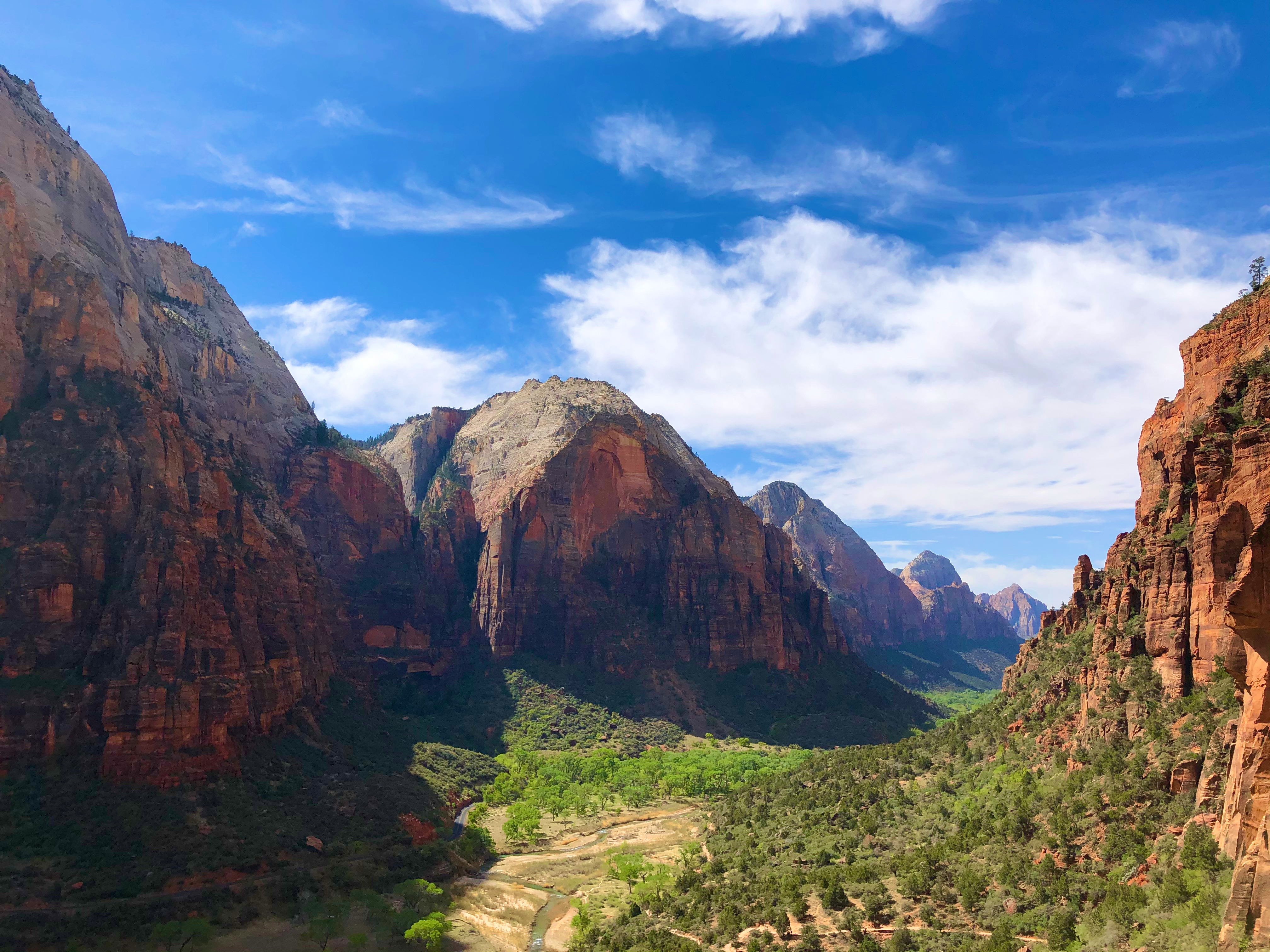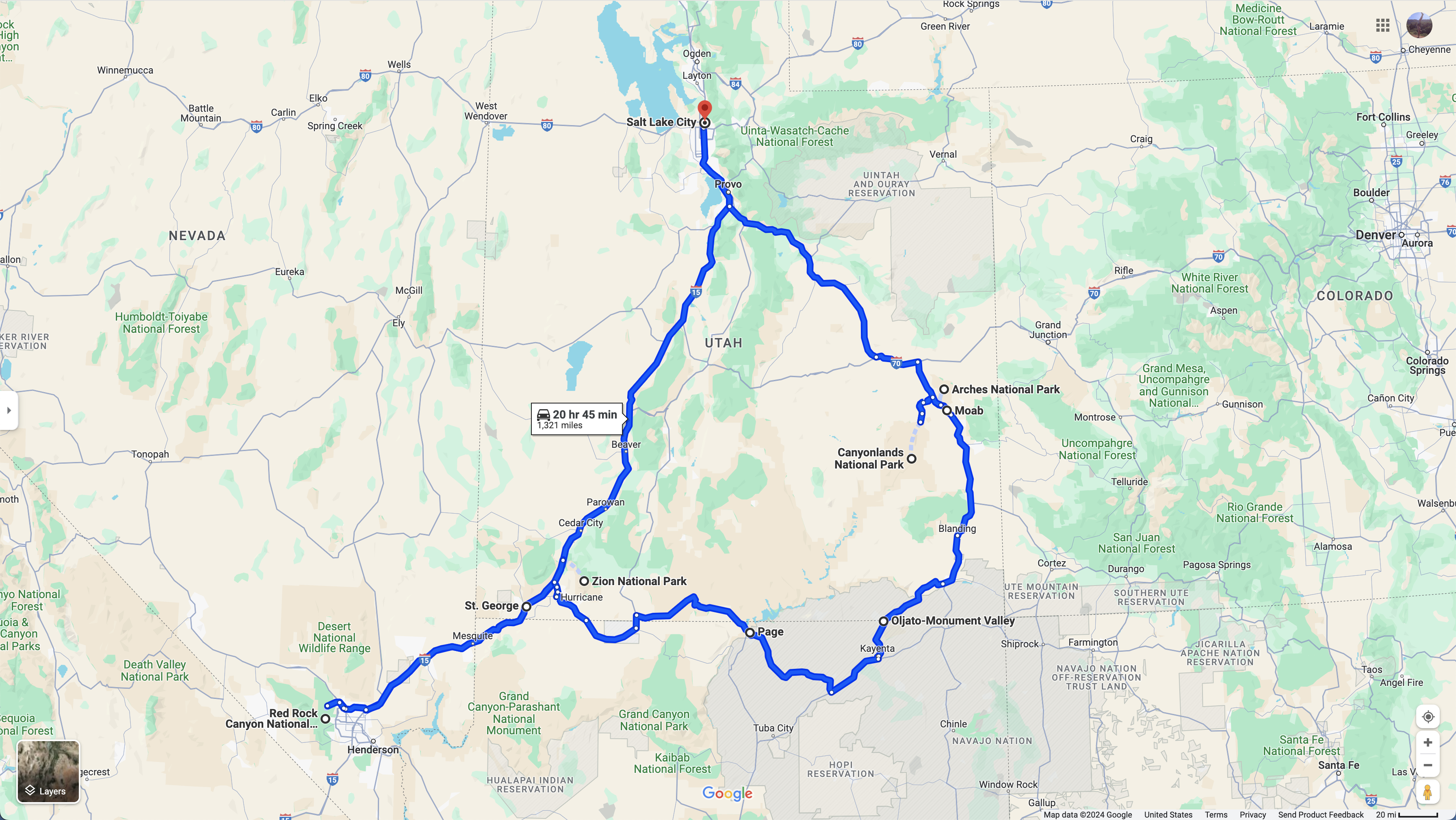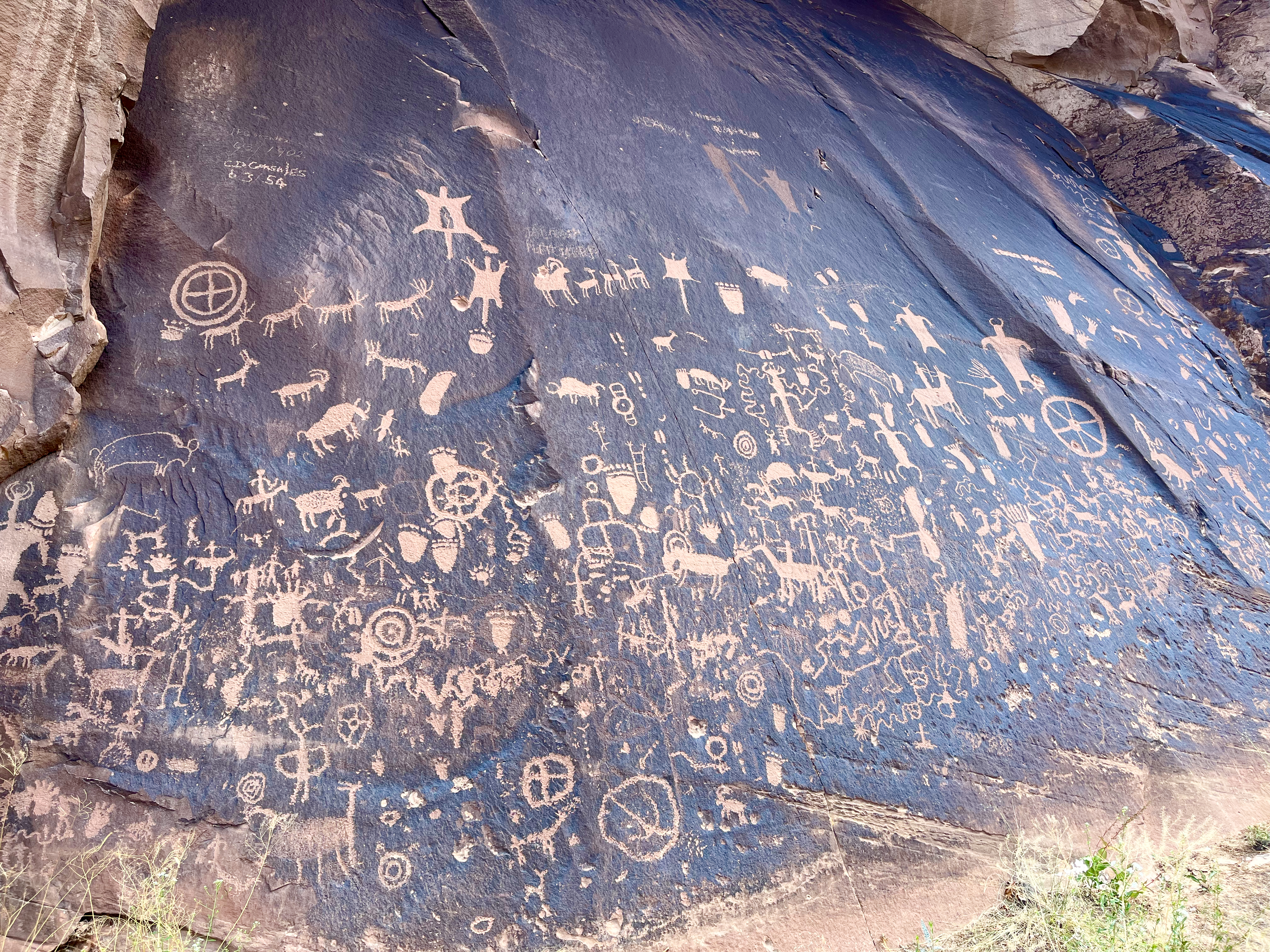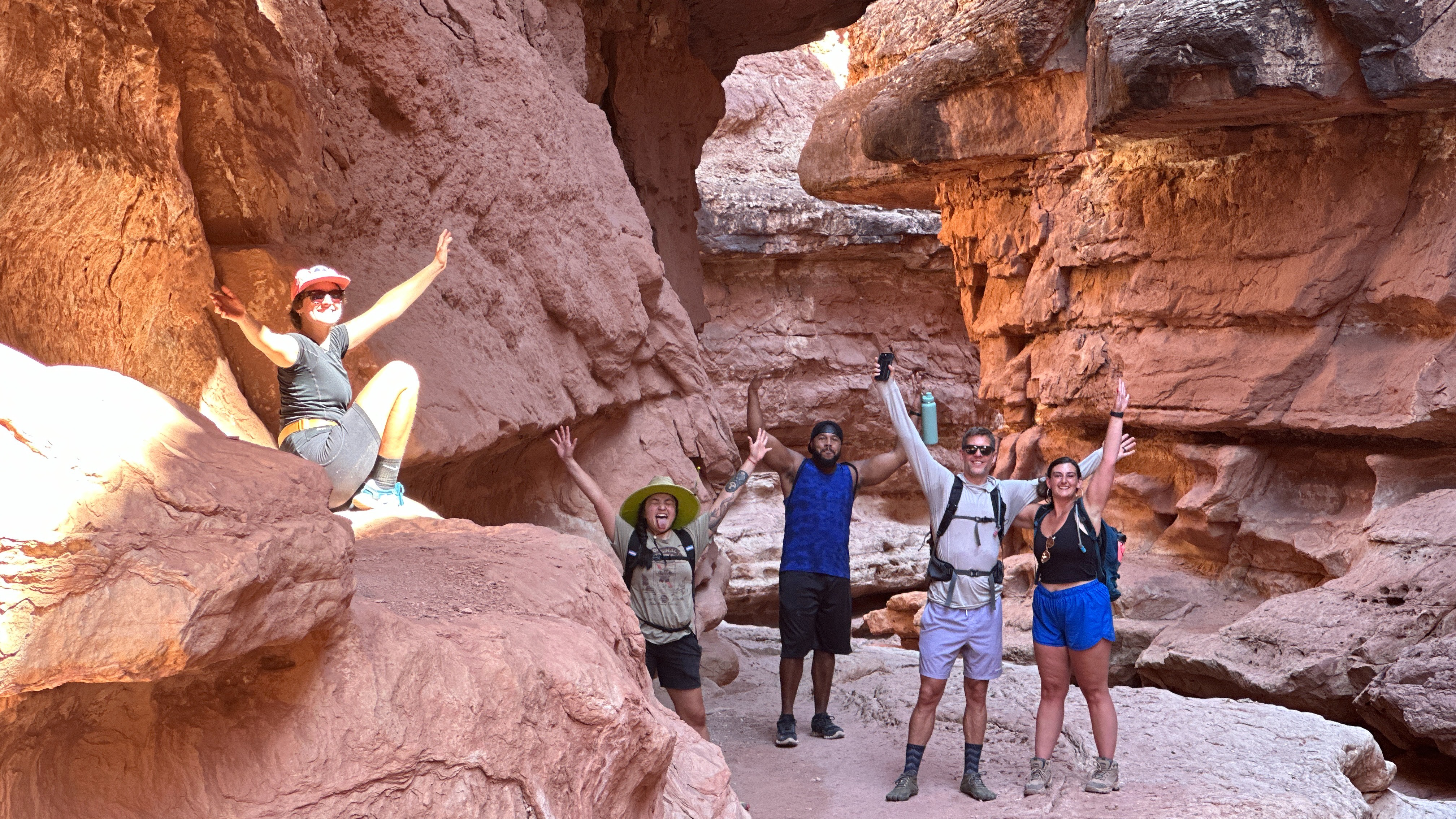Zion National Park: A Thrilling Adventure in Southern Utah
Region: North America
Country: United States
Nestled in the heart of Southern Utah, Zion National Park is one of our favorite destinations, offering an incredible mix of stunning landscapes, thrilling trails, and rich history. Whether you’re an avid hiker or a nature lover, Zion has something to captivate every adventurer. Join us as we recount our exhilarating journey through Zion, exploring The Narrows, Angels Landing, and Kolob Canyon, and provide you with all the information you need to plan your own adventure.
Zion’s Rich History
Established as a National Park in 1919, Zion is Utah’s first National Park and boasts a rich history that dates back to ancient Native American cultures and early pioneer settlers. The park covers over 146,000 acres of diverse landscapes, from deep canyons to high plateaus.
Native American History
The area now known as Zion National Park has been inhabited for thousands of years. Archaeological evidence indicates that the first human presence in the region dates back to approximately 6,000 BC, with the Ancestral Puebloans (formerly known as the Anasazi) being the earliest known inhabitants. These ancient peoples were followed by the Southern Paiute, who named the canyon “Mukuntuweap,” meaning “straight canyon.”
The Ancestral Puebloans left behind a wealth of petroglyphs and ruins, giving us a glimpse into their lives and culture. The Southern Paiute people continue to have a significant cultural and historical connection to the land. They used the area for hunting, gathering, and as a place of refuge.
Pioneer Settlers
In the late 1800s, Mormon pioneers settled in the region, naming it Zion, a biblical term for a place of refuge. They were drawn to the area’s fertile soil and abundant water supply. The name “Zion” reflects the settlers’ view of the canyon as a sanctuary and a blessed place.
The Establishment of the Park
Zion was first protected as Mukuntuweap National Monument in 1909 by President William Howard Taft. In 1919, it was re-designated as Zion National Park. The park’s establishment helped preserve its unique geological formations, diverse ecosystems, and rich cultural history.
The Narrows: An Epic Water Hike
Our adventure began with one of Zion’s most iconic hikes, The Narrows. This unique trail takes you directly through the Virgin River, with towering canyon walls rising dramatically on either side. Armed with water shoes and hiking poles, we waded through the cool, knee-deep water, marveling at the beauty that surrounded us. The hike is both challenging and incredibly rewarding, with each bend revealing new and awe-inspiring views.
One of the most breathtaking sections of The Narrows is known as “Wall Street.” This part of the canyon is characterized by its narrow passageways and towering walls, sometimes reaching up to a thousand feet high. As you navigate through Wall Street, the canyon narrows to just 20-30 feet wide, creating an awe-inspiring, almost otherworldly atmosphere. The play of light and shadow on the sandstone walls, coupled with the sound of the river, makes Wall Street an unforgettable highlight of The Narrows hike.
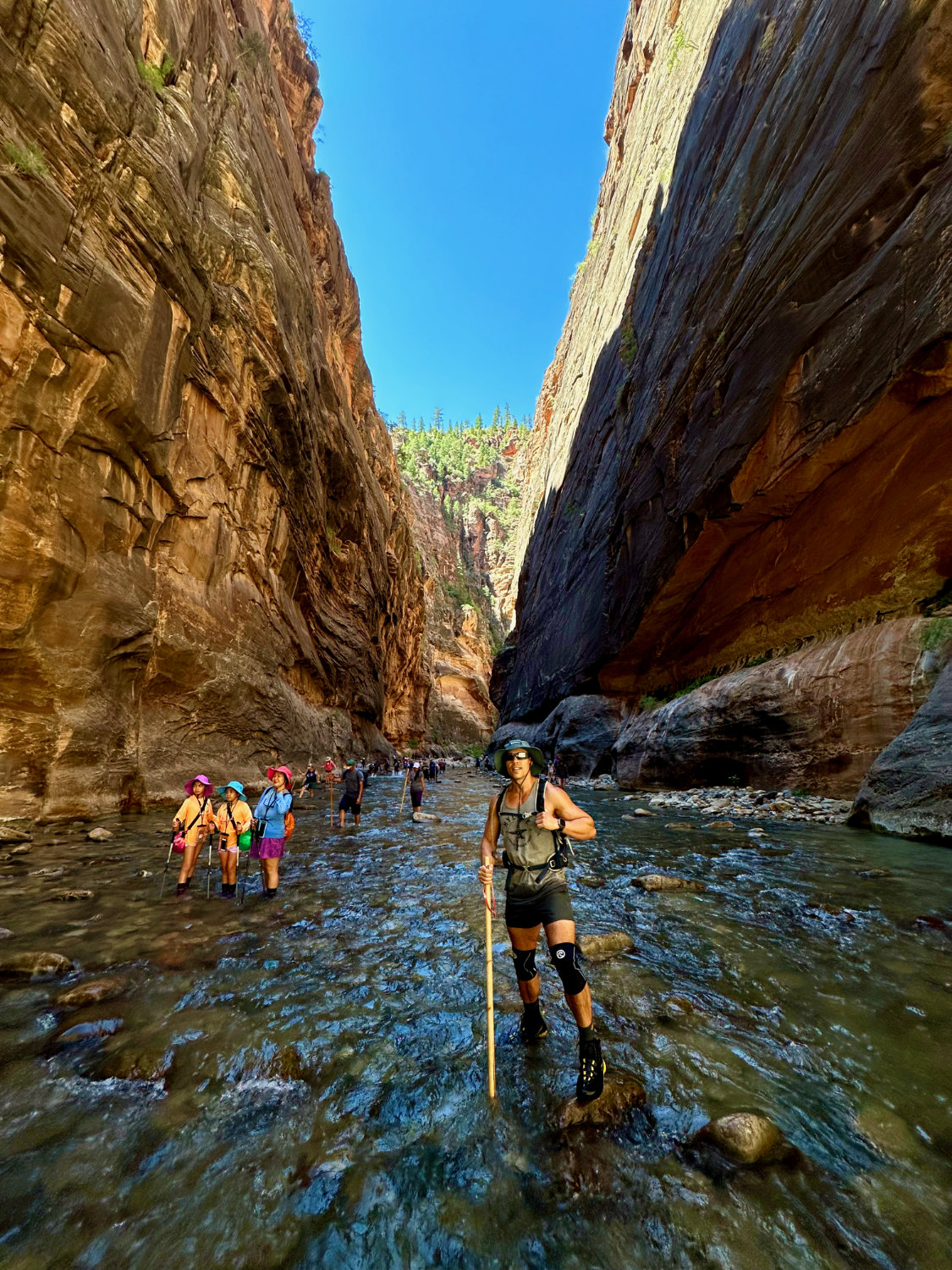
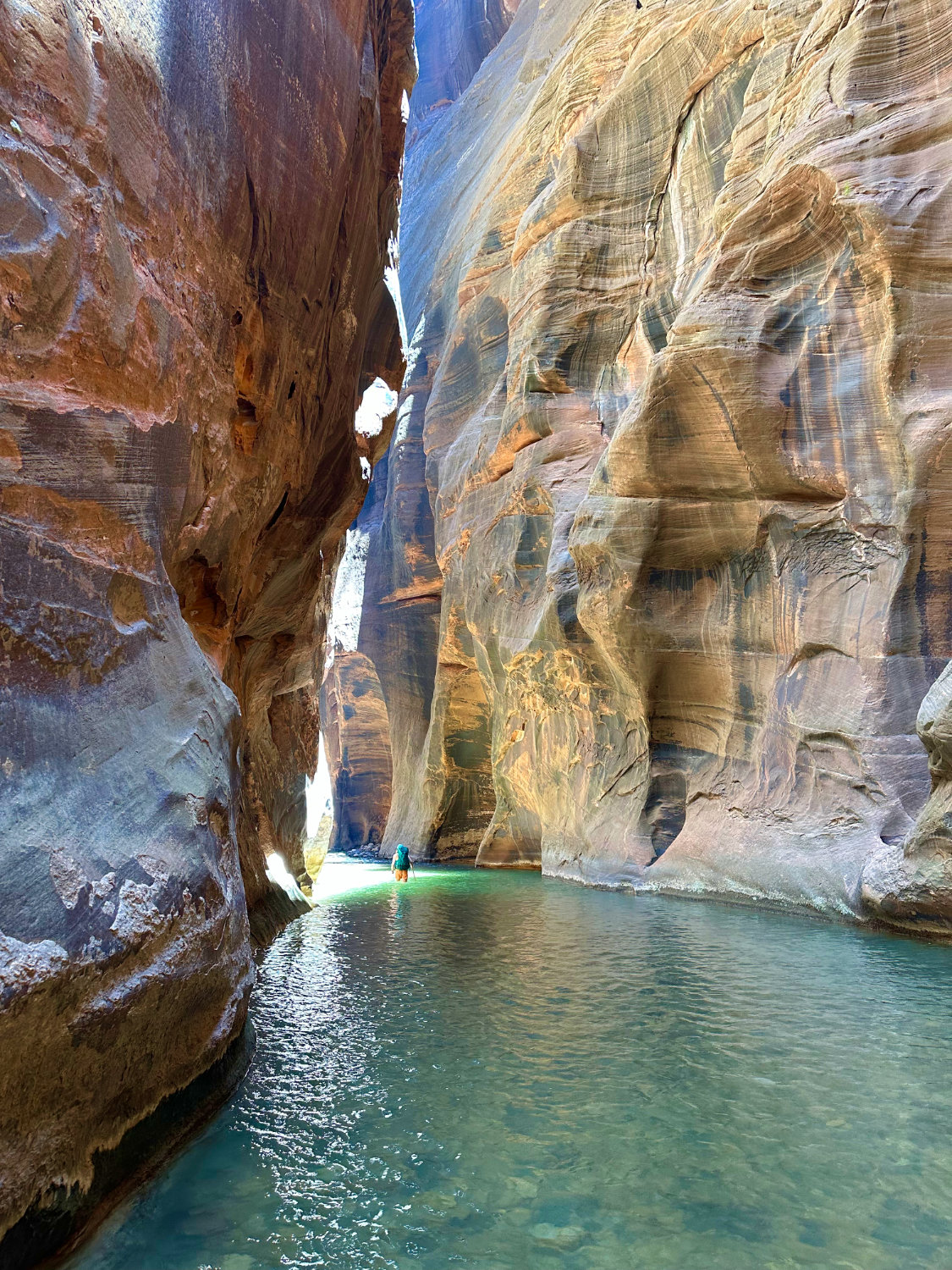
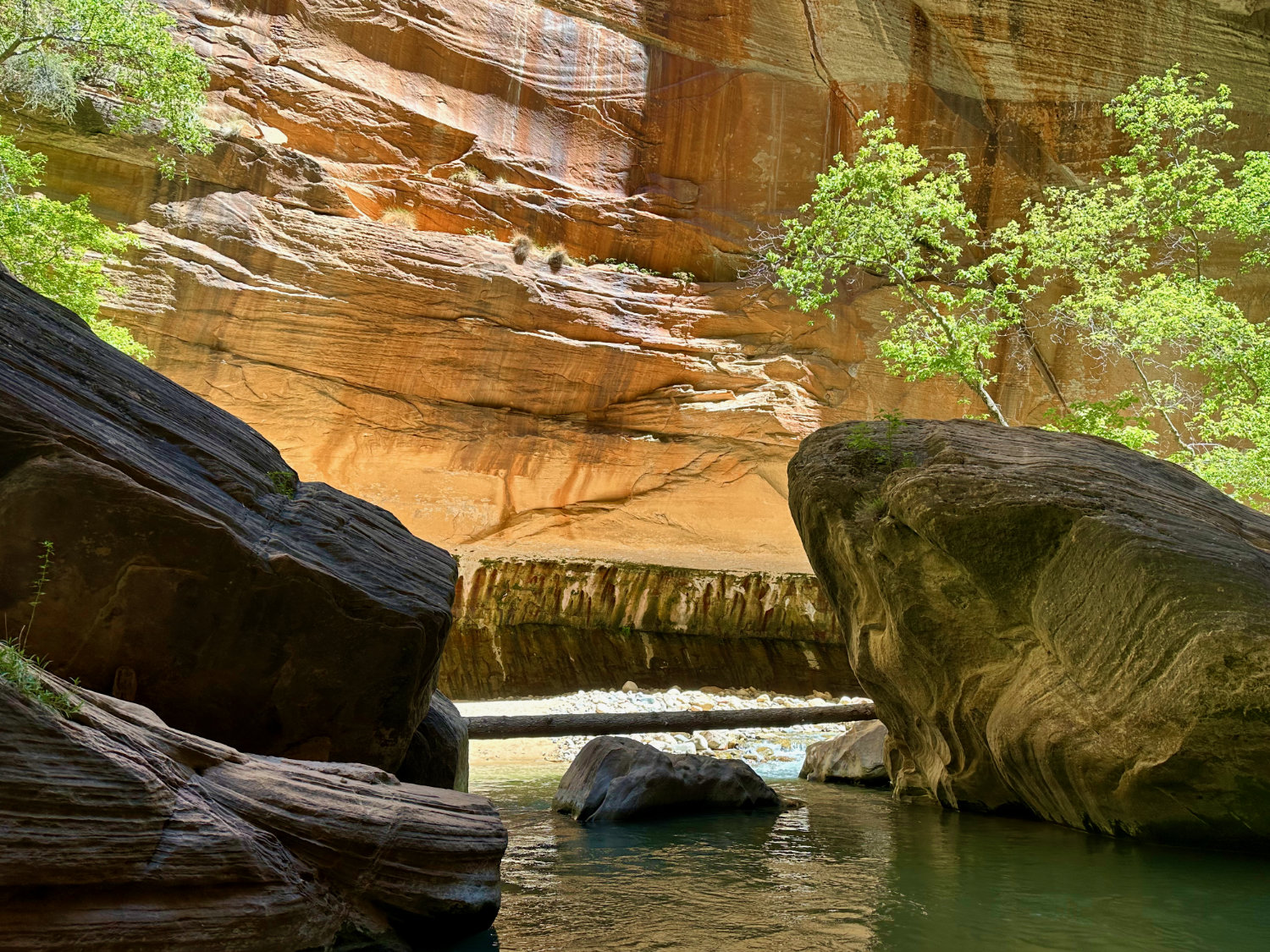
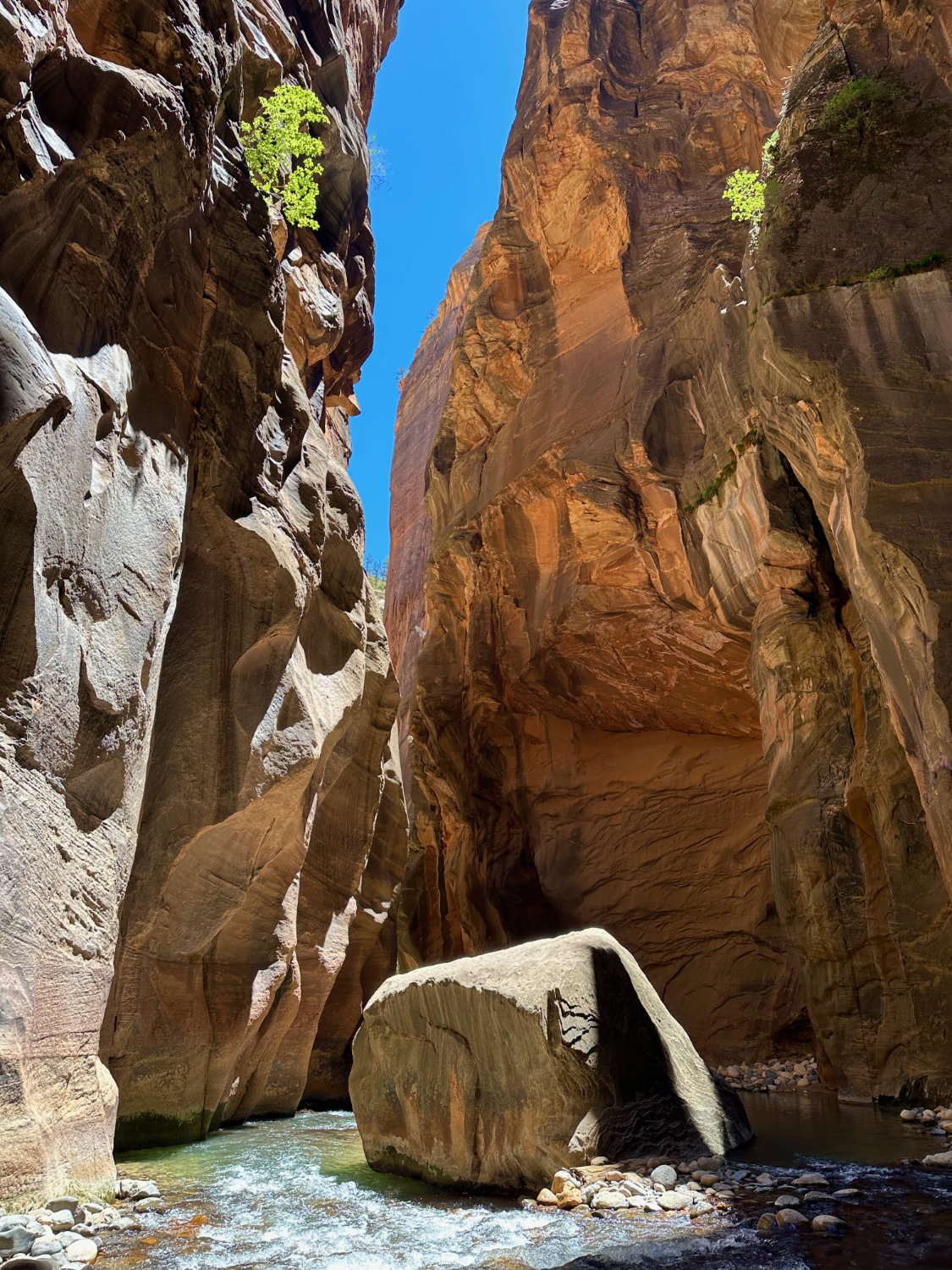
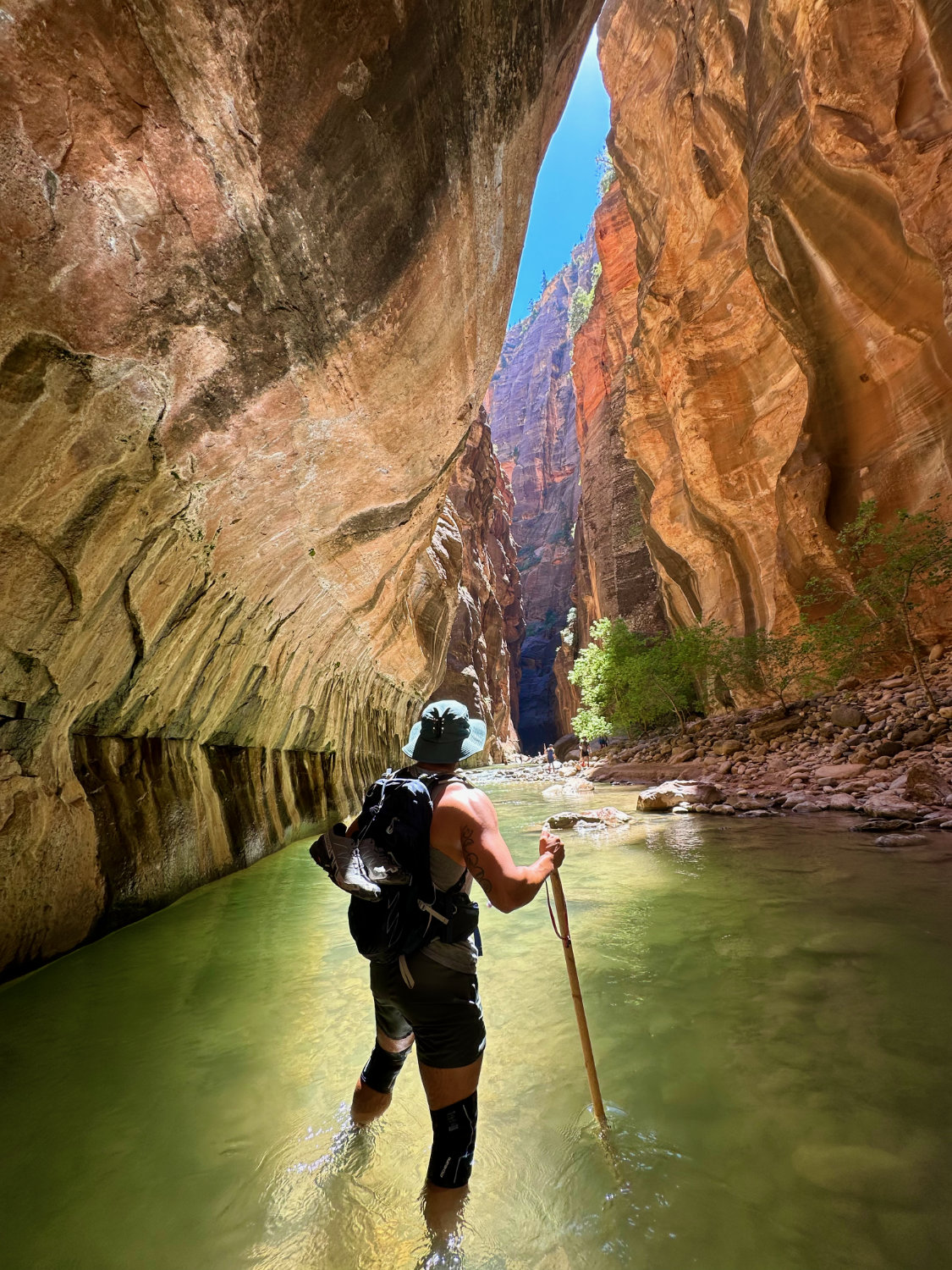
Details for Planning Your Hike:
- Trailhead: Temple of Sinawava (Shuttle Stop 9)
- Difficulty: Moderate to Strenuous
- Distance: Up to 16 miles round trip, but many choose to hike a shorter distance
- Estimated Time: 6-8 hours for a typical hike to Wall Street and back
- Best Time to Hike: Late spring to early fall; check for water levels and weather conditions
- Essential Gear: Water shoes, neoprene socks, hiking poles, dry bags
Angels Landing: A Heart-Pounding Climb
On day 2, we tackled the next hike on our list, the legendary Angels Landing. Known for its steep, narrow paths and sheer drop-offs, this hike is not for the faint of heart. As we ascended the switchbacks of Walter’s Wiggles, our excitement and nerves built up in equal measure. The final half-mile, with its chain-assisted sections, tested our courage and determination. Reaching the summit, we were rewarded with panoramic views of Zion Canyon that made every heart-pounding step worthwhile.
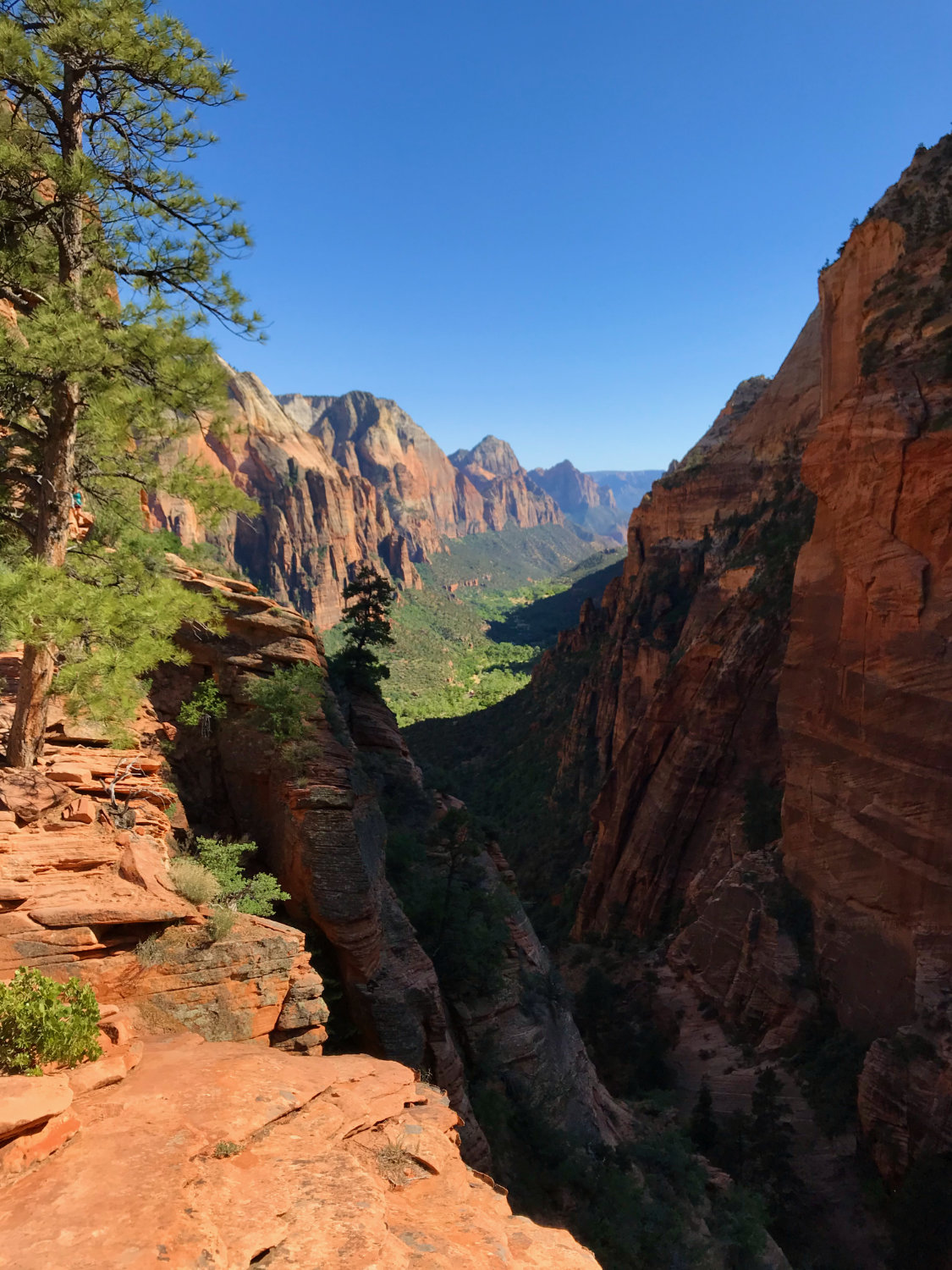
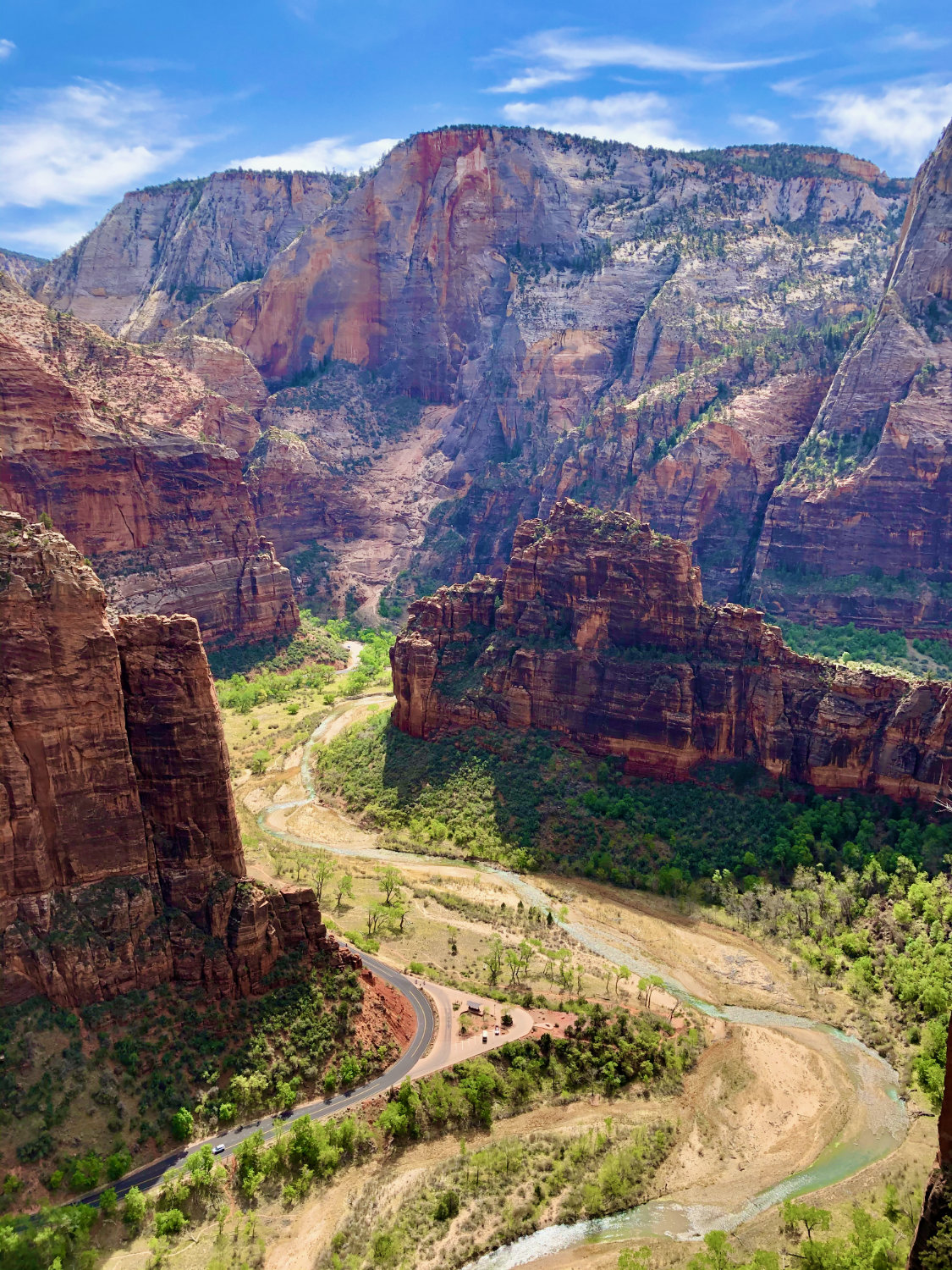
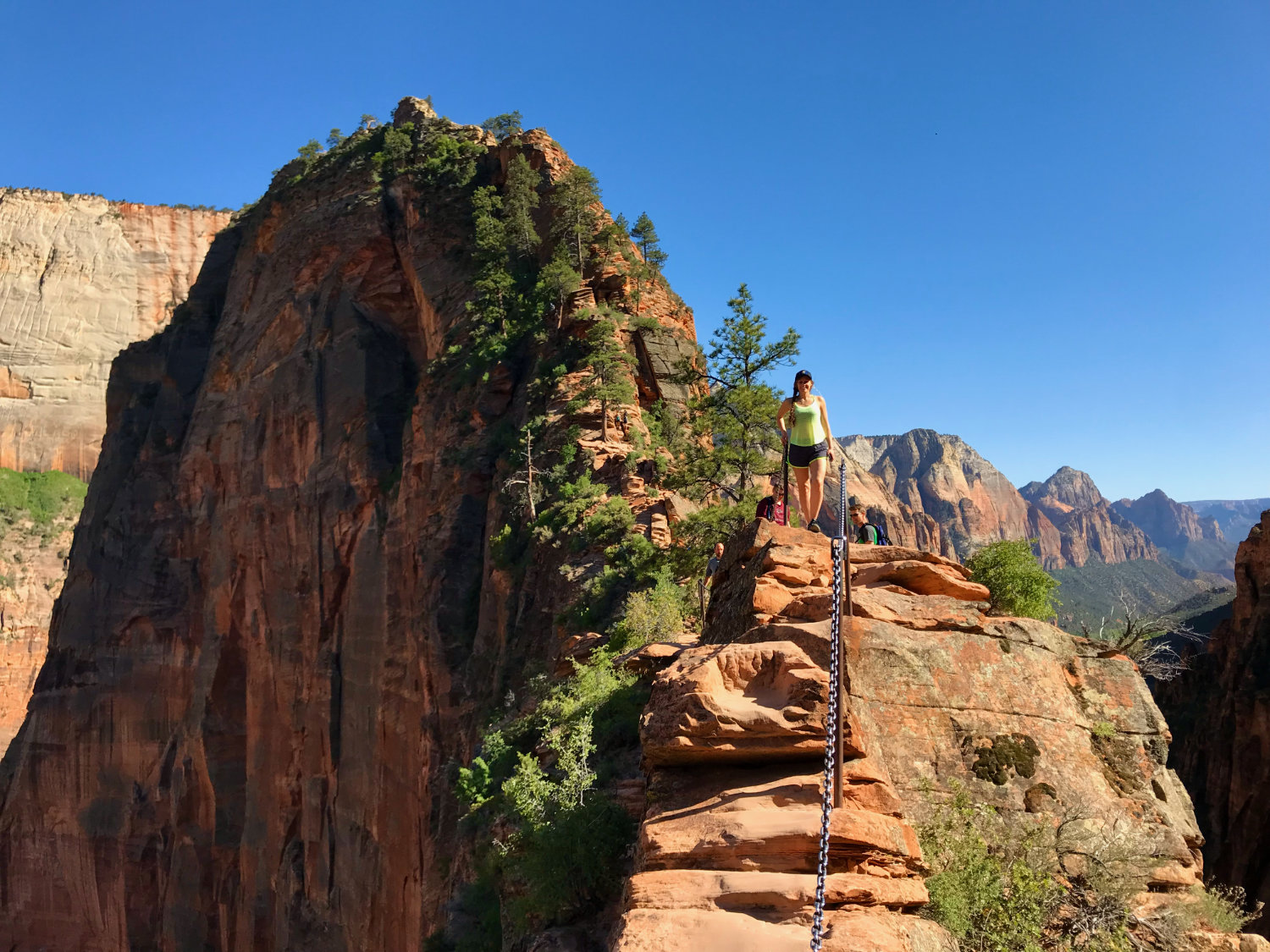
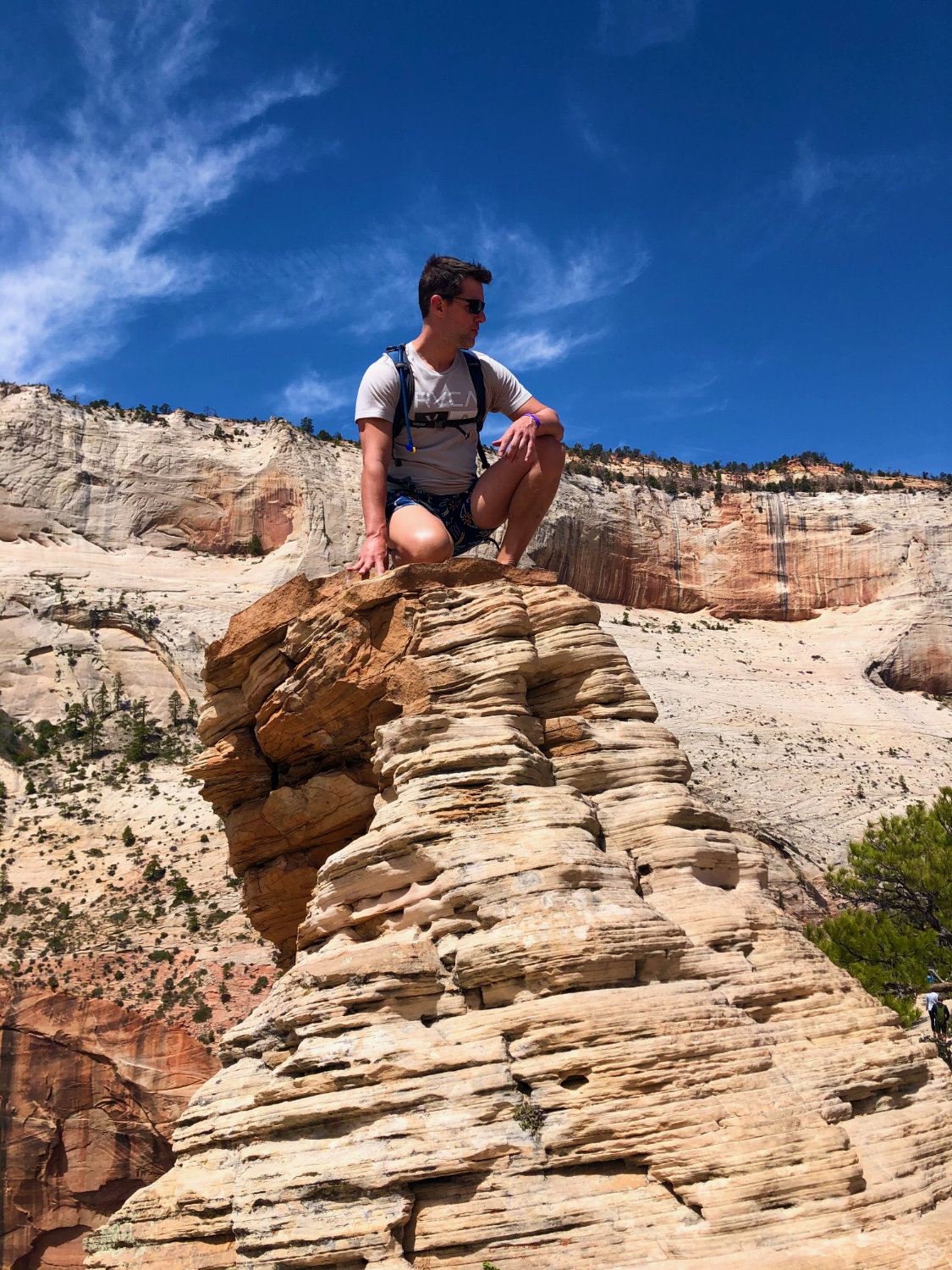
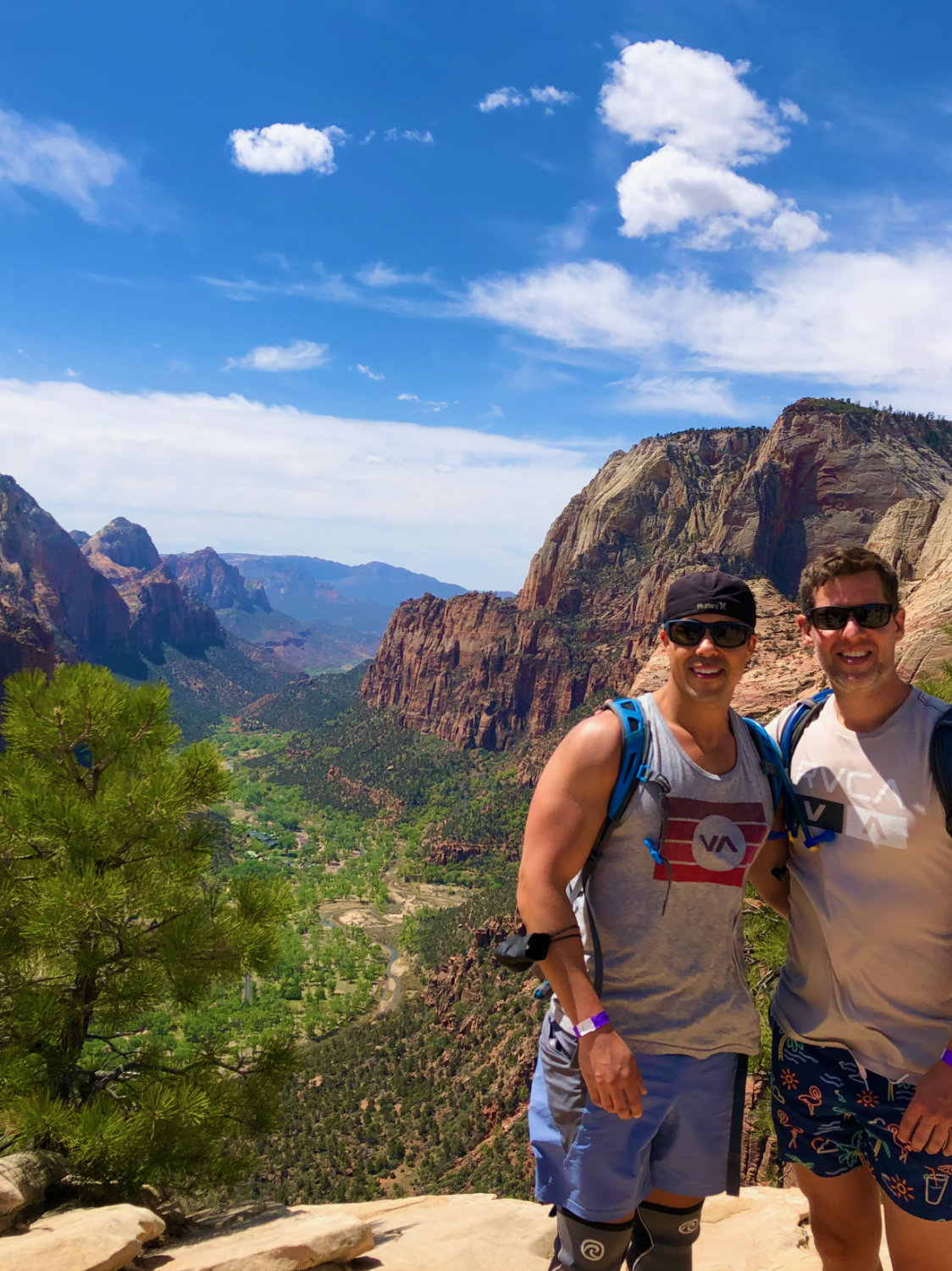
Details for Planning Your Hike:
- Trailhead: The Grotto (Shuttle Stop 6)
- Difficulty: Strenuous
- Distance: 5.4 miles round trip
- Elevation Gain: 1,488 feet
- Estimated Time: 4-5 hours round trip
- Permits Required: Yes, permits are required and can be obtained through a seasonal lottery system
- Best Time to Hike: Spring and fall for milder temperatures
Pa’rus Trail: A Scenic, Pet-Friendly Walk
The Pa’rus Trail is a delightful, pet-friendly trail that offers stunning views of Zion Canyon. This 1.5-mile paved trail runs alongside the Virgin River, making it perfect for a leisurely walk with your pet. The trail is accessible and easy, making it ideal for families and those looking for a less strenuous activity.

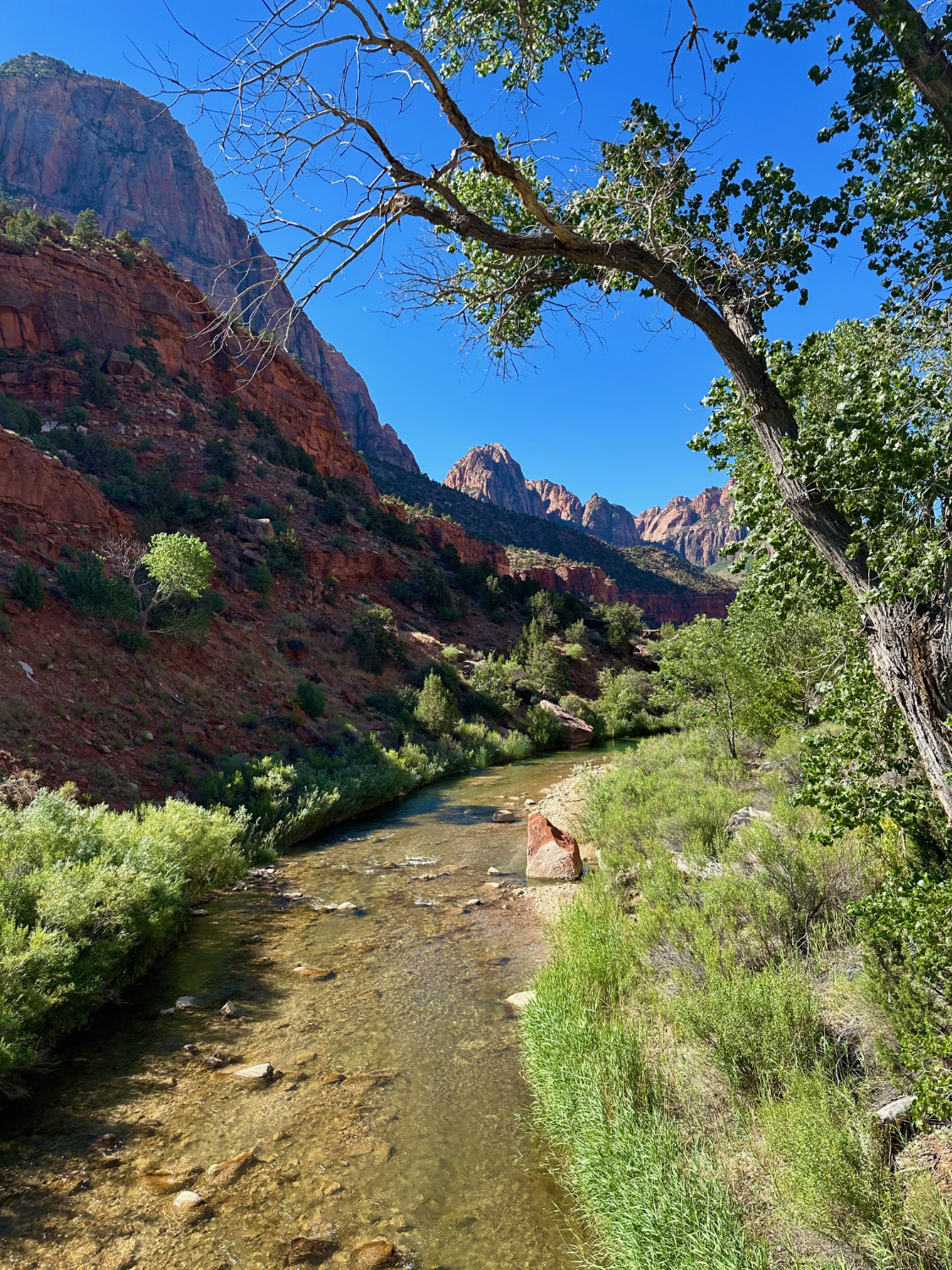
Details for Planning Your Hike:
- Trailhead: Zion Canyon Visitor Center (Shuttle Stop 1)
- Difficulty: Easy
- Distance: 3.5 miles round trip
- Estimated Time: 1-2 hours round trip
- Pet-Friendly: Yes, pets are allowed on this trail and must be kept on a leash no longer than six feet
- Highlights: Scenic views of the Virgin River, accessible path, great for a leisurely walk
Kolob Canyon: A Hidden Gem
On our way out of the park and back to Salt Lake City, we ventured to the lesser-known Kolob Canyon. This area of Zion offers a quieter, more secluded experience, perfect for those looking to escape the crowds. The scenic drive through Kolob Canyon provided stunning vistas of red rock formations and lush valleys. Although we didn’t do any of the hikes that Kolob Canyon has to offer, we will be back for sure and plan on hiking the Taylor Creek Trail. This moderate trek leads you through a serene landscape of towering cliffs and verdant foliage, culminating at the Double Arch Alcove, a natural amphitheater with impressive twin arches.
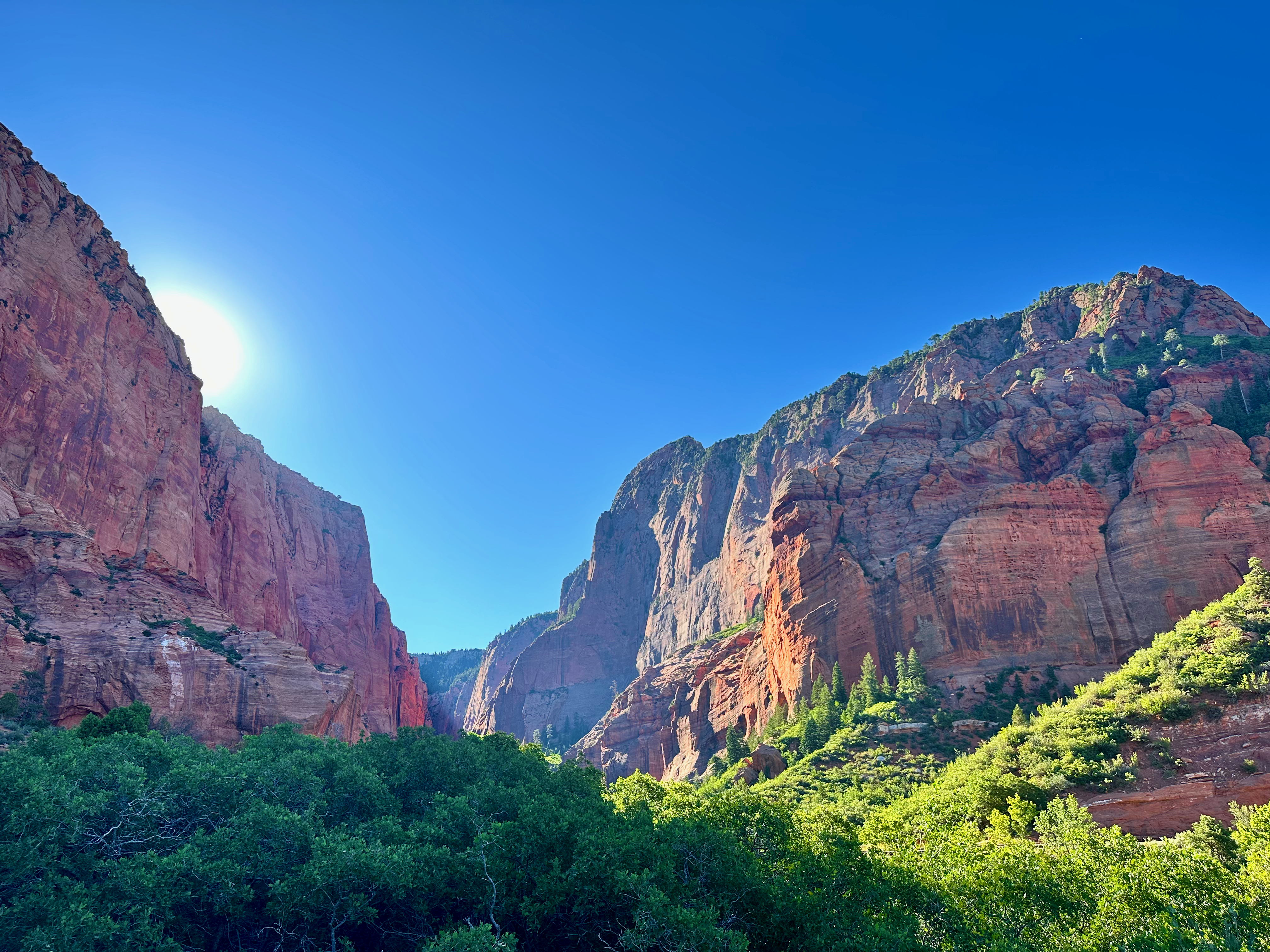
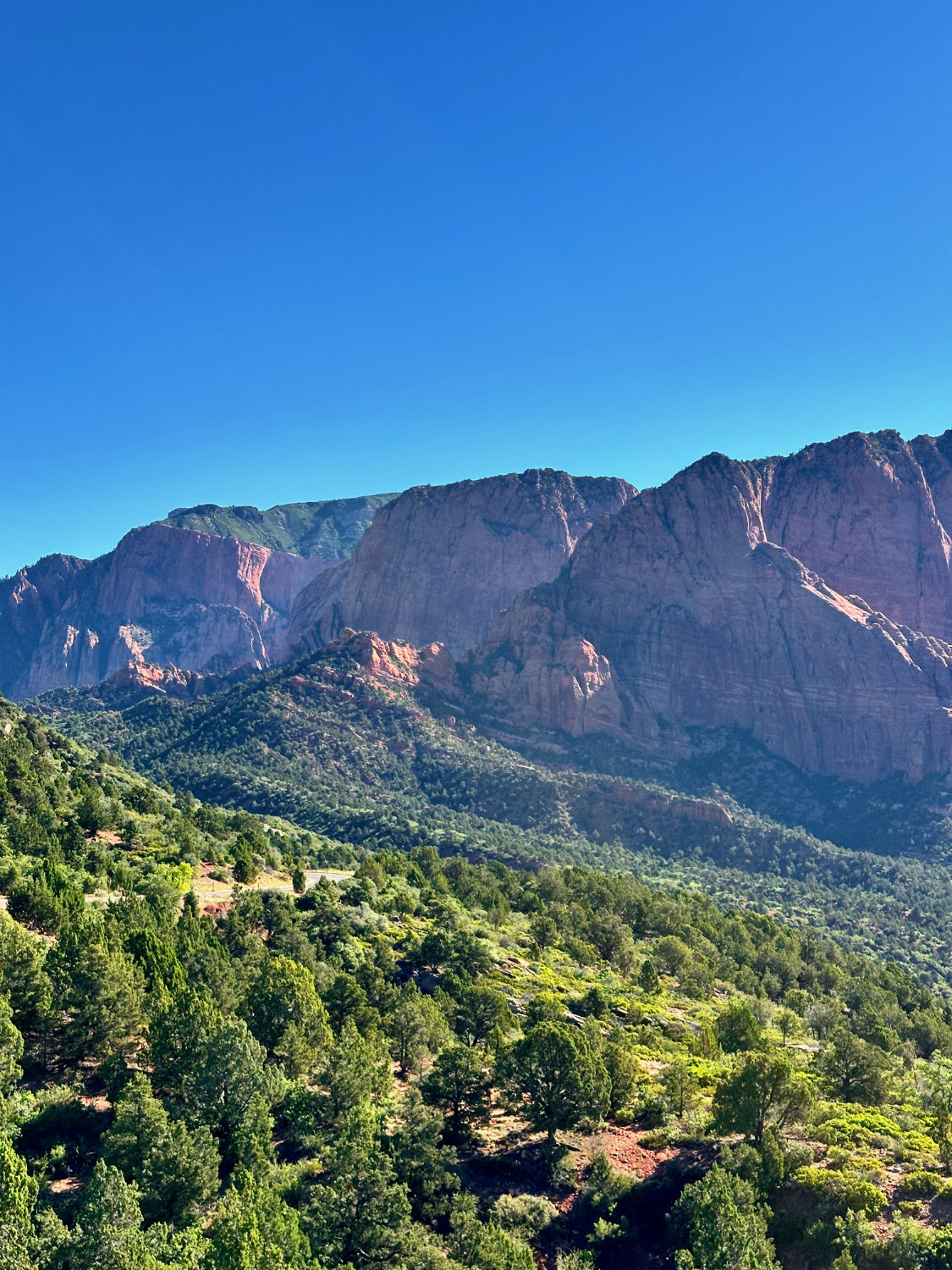
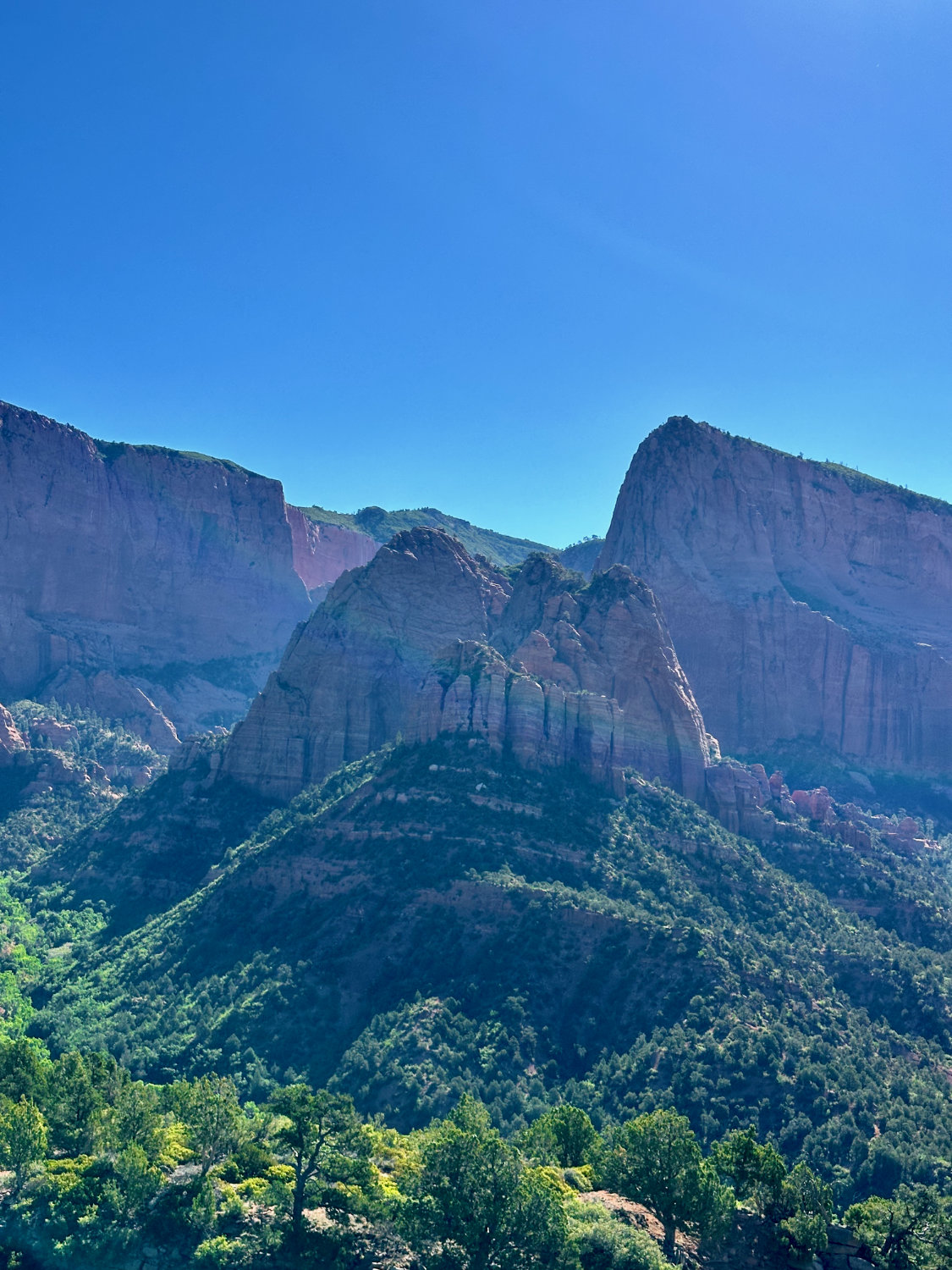
Details for Planning Your Hike:
- Trailhead: Kolob Canyons Visitor Center
- Difficulty: Moderate
- Distance: 5 miles round trip
- Estimated Time: 4 hours round trip
- Best Time to Hike: Spring and fall for comfortable temperatures
Visitor Information
Shuttle System: To manage the high volume of visitors and protect the environment, Zion operates a shuttle system from March to November. The shuttles are free and provide access to various trailheads and points of interest within the park.
Shuttle Stops for Key Hikes:
- The Narrows: Temple of Sinawava (Shuttle Stop 9)
- Angels Landing: The Grotto (Shuttle Stop 6)
- Emerald Pools: Zion Lodge (Shuttle Stop 5)
- Weeping Rock: Weeping Rock (Shuttle Stop 7, currently closed due to rockfall)
Planning Your Visit:
- Accommodations: Options range from campgrounds within the park to hotels and lodges in nearby Springdale.
- Permits: Required for certain hikes like Angels Landing and all overnight backpacking trips.
- Weather: Summer temperatures can be extreme, while spring and fall offer milder weather.
Traveling with Pets in Zion
Zion National Park is a fantastic destination for outdoor enthusiasts, but traveling with pets requires some extra planning. While pets are allowed in the park, there are specific guidelines to follow to ensure their safety and the protection of the park’s natural resources.
Pet-Friendly Areas:
- Pa’rus Trail: The only trail in Zion where pets are allowed. This 1.5-mile paved trail offers beautiful views of the canyon and is perfect for a leisurely walk with your pet.
- Campgrounds: Pets are allowed in campgrounds but must be kept on a leash no longer than six feet.
- Public Roads and Picnic Areas: Pets can be with you in these areas, but they are not allowed on other trails, shuttle buses, or in wilderness areas.
Shuttle System: Pets are not allowed on the Zion shuttle buses. If you plan to hike trails where pets are not allowed, you’ll need to make arrangements for their care while you are away. Consider nearby pet boarding facilities or pet-friendly accommodations that offer pet-sitting services.
General Guidelines:
- Leash Requirement: Pets must be kept on a leash no longer than six feet at all times.
- Waste Disposal: Pet owners are responsible for cleaning up after their pets. Bring waste bags and dispose of them in designated trash bins.
- Hydration and Safety: Ensure your pet has plenty of water and is protected from the heat. Summer temperatures can be extreme, so plan walks in the cooler parts of the day.
Exploring Beyond Zion: St. George and Snow Canyon State Park
We often like to extend our adventure by staying in St. George, a charming town less than an hour away from Zion. This allows us to not only enjoy the comforts of a vibrant town but also explore nearby Snow Canyon State Park. Known for its stunning red and white Navajo sandstone formations, Snow Canyon offers a variety of hiking trails, scenic drives, and opportunities for rock climbing and photography. It’s the perfect complement to the dramatic landscapes of Zion, showcasing even more of Southern Utah’s natural beauty.
Snow Canyon Highlights:
- Petrified Dunes: A unique landscape of ancient sand dunes turned to stone
- Jenny’s Canyon: A short, easy hike leading to a beautiful slot canyon
- Butterfly Trail: A moderate hike offering panoramic views of the canyon
Zion National Park is a testament to nature’s grandeur, offering an array of adventures for those willing to explore its depths. From the thrilling heights of Angels Landing to the refreshing waters of The Narrows and the tranquil beauty of Kolob Canyon, Zion promises an unforgettable experience for every adventurer. Pack your bags, lace up your hiking boots, and get ready to discover the magic of Zion National Park and the surrounding wonders of Southern Utah.
